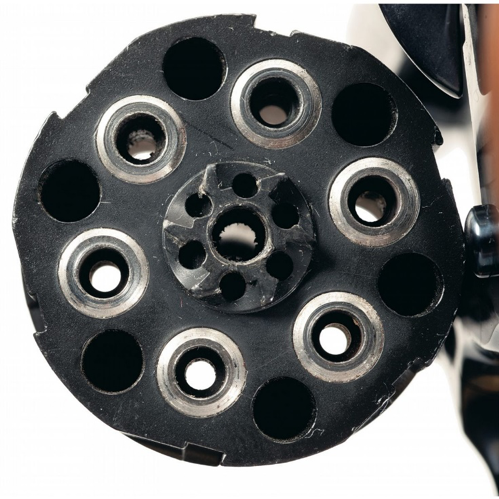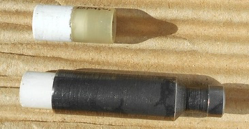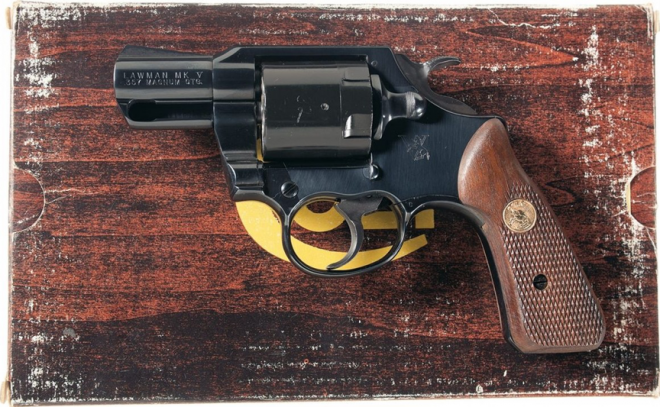It was called the “Golden age of Hijacking,” between 1968 to 1972, no less than 130 American airliners were hijacked and routed to foreign airfields by individuals that were passengers on board, and who sneaked in a knife or a handgun. The reasons varied from political stance to ransom money. Cuba was the destination of choice for most of them as it was the nearest “hostile to US landing site” and it was pictured in the confused minds of many of the hijackers as the perfect “social worker paradise”. The airline company that took the lion share of those hijacks was a Miami based company named Eastern Airlines. Eastern had 45 of their aircraft hijacked; 27 of those in 1972 alone. The company launched an expensive and extensive security program, and the manager of operational security, a man named John Edward Shields, was installed to provide full cooperation with the FAA and their newly minted Sky Marshal Program.
Shields wasn’t supportive of the Sky Marshal Progam, to say at least. He believed that the best place to stop a bad-doer is on the ground with security screening stops rather than high altitude shootouts.
Shields was also vocal regarding the quality of the men drafted to the Sky Marshal roles or more precisely their lack of quality. Shields listed reports of marshals dropping their concealed revolvers, forgetting their guns in the plane (or airport restrooms) or even marshals who accidental discharge their guns on flight on the flight.
Eventually, the FAA pressed Eastern, like other airliner companies, into a “cooperative understanding” and Marshals began boarded Eastern planes.
Mr. Shields had a plan B he made while trying to hold the FAA Marshals at bay–if armed men were going to be required on the planes, they should be the aircraft’s pilot and co-pilot, not FAA marshals.
He turned to Colt in a request to develop a handgun to arm the pilot and co-pilot with specific requirements, namely that the gun’s ammo should not penetrate the plane fuselage, ricochet, or over-penetrate the target. To avoid any malicious use of the firearm on board the plane, at the airport, or at the pilots’ houses/hotel rooms, the gun and ammo would be separate. One pilot would carry the revolver frame without the cylinder and the other just the cylinder. The weapon would have to be assembled in the cockpit and locked in a safe to be used if needed. Another safety feature was that the revolver could not be loaded with a regular cylinder and vice versa – the cylinder is useless without its frame. If either component was stolen or taken from either of the pilots, they couldn’t be used with available replacement parts.
Colt directed this engineering request to one of its subsidiary companies, Colt Technik of Jericho New-York. Technik converted a small number of Colt revolvers to testbed prototypes. The final number produced was unknown, but at least three are known to exist.





The two models they used as prototypes were the Trooper MK III and Lawman MK V lines. These were modified to accommodate a black six shot cylinder made out of a plastic called Zytel.

Each cylinder had six stainless steel inserts embedded, and each one of those inserts contained a primer, gunpowder, sabot, and a brittle projectile made of Plaster of Paris (PoP).
The projectile was too brittle to engage the barrel rifling so it rested on plastic sabot which latched to the rifling instead. A black rubber seal covered the insert, likely to protect the projectile from humidity. The seal was marked with ‘riXng’.

I speculate that this ‘riXng’ mark was Colt’s attempt at branding their revolvers as accurate, playing off of a target’s inner 10 ring (also known as the X-ring).
The inserts are firmly placed in the cylinder and can’t be replaced individually, loading and reloading the gun was done by replacing and disposal the used cylinder with a fresh one. Another notable change is the absence of the ejection rod; there was no need to eject the spent cartridges, so the rod was completely trimmed. That trimming is even more noticeable in the case of the Lawman MK V conversion as it had a nice under barrel rod cavity left empty.

Technik filed two patents describing their weapon system: US3765116 and US3780657.



The guns and ammo were both tested, and indeed the brittle PoP projectiles were found to be suited to the task. The weapons were tested against goat corpses to evaluate their potential penetration into a human body, whether they would fragment (and not over penetrate), and stray shots would indeed shatter when impacting aircraft aluminum walls.
Technik submitted their designs, manufacturer drawings, and test results to Colt. Colt, however, never had the chance to deliver any of those guns the Eastern. The Eastern Airlines Board of Directors had been convinced to allow sky marshals to board Eastern’s airplanes, and thus found no point in arming and training their pilots to prevent hijackings. Especially when the airline was already paying the marshal salary and losing the ticket price of the seat.
The small number of converted revolvers eventually were sold to private gun owners and retailers. One interesting, and indeed ironic, plot twist is that whenever one of those gun or their cylinders surface for sell, they are labeled as the Sky Marshal or Air Marshal Revolver. To the best of my research efforts, I could not find if Colt ever proposed the gun to any Air or Sky Marshal program, domestic or foreign, let alone sell the gun to the public. It is likely that the name was part of creative gun retailer marketing strategy to associate the strange weapon with the well-known marshals.

John Edward Shields passed away a few years ago and it is almost certain that he was aware of the name attached to ‘his’ gun. I can’t imagine he was pleased with the idea that the gun he designed, developed and deployed (with the purpose of keeping the sky marshals out of Eastern Airlines planes) had been rebranded as ‘Sky Marshal’ or ‘Air Marshal’ revolver.
According to Technik founder and former CEO, Mel Zaid, neither the gun nor the project ever had a proper name, only number designations. There is also no clear reason to believe Colt ever gave it a name after their client turned his back. With a hope that the name I throw will stick I’m suggesting the name “Colt Shields” be given to the gun since I think Mr. Shields, a decorated USMC aviator who served in both WW2 and Korea, and his initiative deserve to be recognized and remembered.
The Colt “Shields”, and other guns and cartridges developed and used for the confined space of airliners, will be presented in an upcoming article in the FWS Armory series – Pressurized Environments Firearms.
Acknowledgment:
Mel Zaid; founder and former CEO of Technik Inc.
David Louis Buehn; CEO of Rough & Ready Inc..
John Edward Shields kin.
David Lee Russell; author of Eastern Air Lines: A History, 1926-1991
 Your Privacy Choices
Your Privacy Choices
